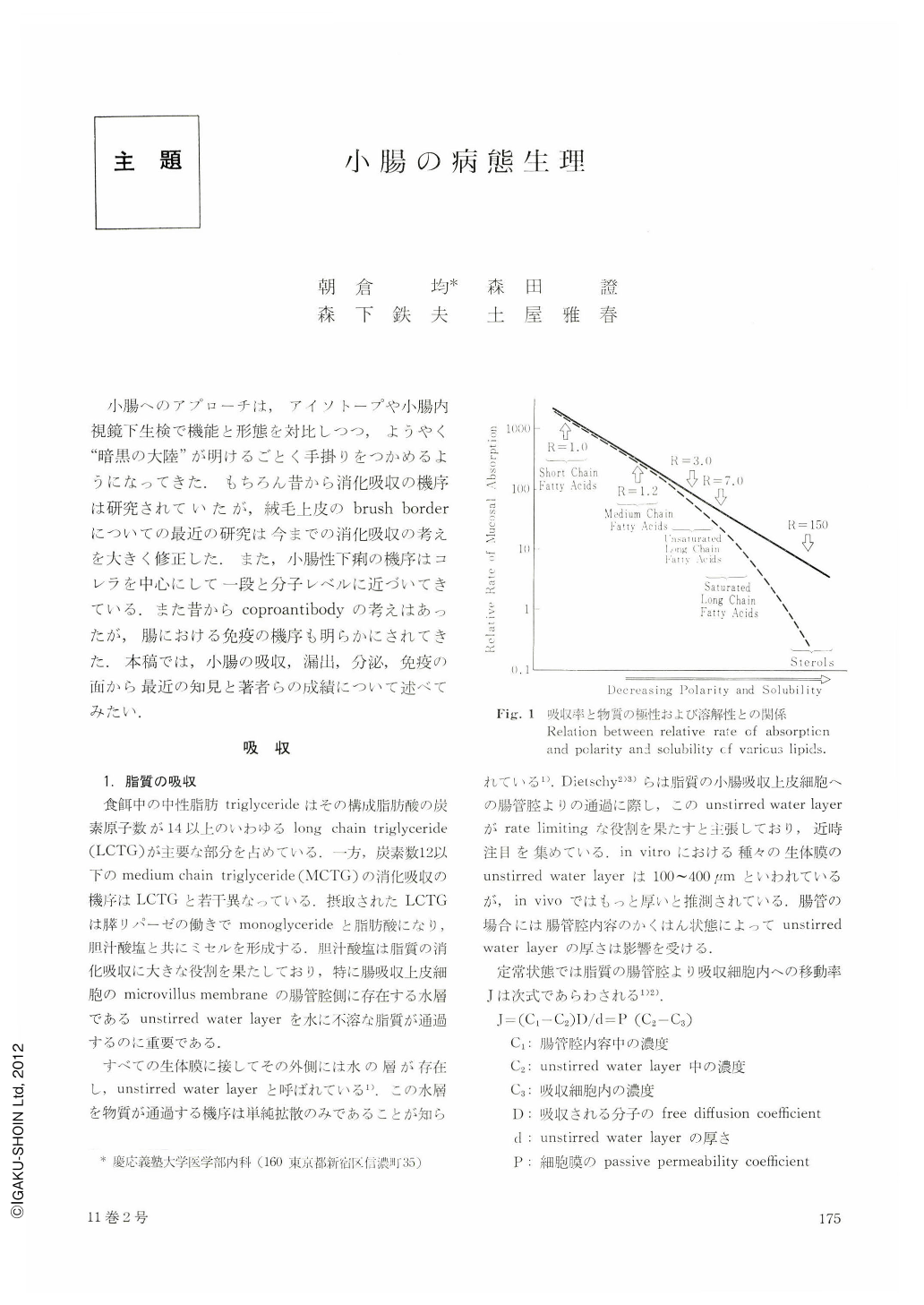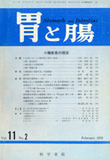Japanese
English
- 有料閲覧
- Abstract 文献概要
- 1ページ目 Look Inside
小腸へのアプローチは,アイソトープや小腸内視鏡下生検で機能と形態を対比しつつ,ようやく“暗黒の大陸”が明けるごとく手掛りをつかめるようになってきた.もちろん昔から消化吸収の機序は研究されていたが,絨毛上皮のbrush borderについての最近の研究は今までの消化吸収の考えを大きく修正した.また,小腸性下痢の機序はコレラを中心にして一段と分子レベルに近づいてきている.また昔からcoproantibodyの考えはあったが,腸における免疫の機序も明らかにされてきた.本稿では,小腸の吸収,漏出,分泌,免疫の面から最近の知見と著者らの成績について述べてみたい.
Pathophysiology of the small intestine was reviewed from the standpoints of intestinal absorption, enteric loss, intestinal secretion and immunological basis of the diseases of intestine.
As to the absorptive mechanisms, the role of unstirred water layer in absorption of dietary fats, membrane digestion of carbohydrates and role of immune response of intestinal mucosa in absorption of macromolecules were commented.
The mechanism of enteric protein loss was discussed from the aspects of lymphatic abnormality, the enhancement of enterohepatic circulation of albumin, the abnormalities of intestinal mucosa itself and vascular hyperpermeability. Since the lymphatic dilatation of the small intestine can be observed not only in lymphangiectasia intestinalis but also in Behçet's disease, intestinal amyloidosis and liver cirrhosis, it is not a sufficient finding to indicate the presence of proteinlosing enteropathy. Small intestinal fiberscopic examination in lymphangiectasia intestinalis showed scattering white spots, white villi as well as attatchment of chylous substance on the jejunal mucosa. An enhancement of degradation rate and shortening of half life of plasma albumin was observed in protein-losing enteropathy, whereas decreasis in degradation rate and elongation of half life was found in malabsorption syndrome.
The mechanism of diarrhea in cholera enteritis was discussed as a model of intestinal hypersecretion. In cholera enteritis, histological examination of jejunal biopsy specimens revealed the pathy denudation of mucosa and morphological abnormalities of villi. Moreover, 3 types of pseudopod-like cytoplasmic projections were observed electronmicroscopically on epitherial cells and undifferentiated cells.
As to immunological basis of intestinal disorders, secretory mechanism and its possible role in the local immunity of secretory IgA and intestinal manifestations in immune-deficiency syndromes were commented with the considerations of pathogenesis of intestinal autoimmune diseases. It was clarified that the abnormalities of cellular immunity could be found in protein-losing enteropathy due to or not due to lymphangiectasia intestinalis.

Copyright © 1976, Igaku-Shoin Ltd. All rights reserved.


